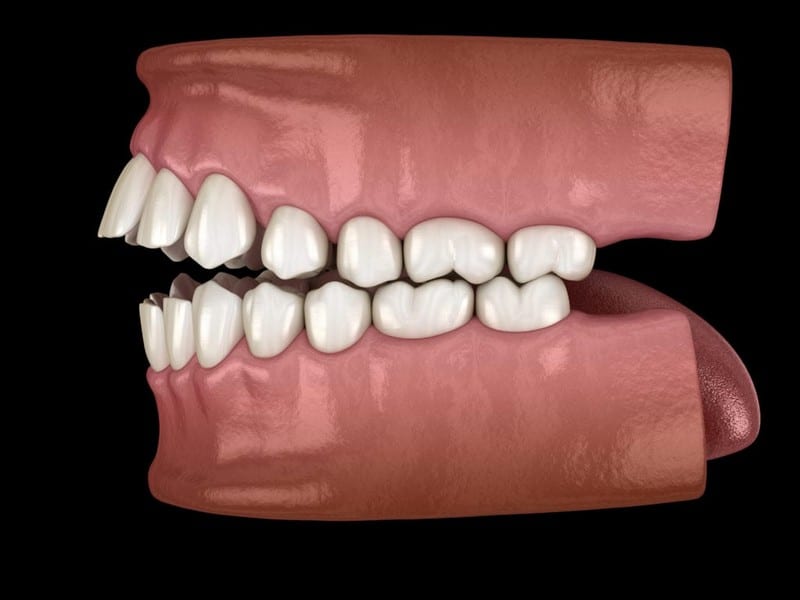Abnormal Bite

The medical term for an abnormal bite is malocclusion, which happens when the upper and lower teeth connect abnormally. When the jaw moves to one side, the jaw and teeth develop unevenly, and the enamel wears away on one side of the teeth. An abnormal bite can cause problems with swallowing, where the tongue protrudes between the teeth.
While teeth grinding is the most common cause of TMJ dysfunction, an abnormal bite may contribute to the condition and cause toothache. Different types of bite problems include crossbite, underbite, open bite, spacing, crowding, protrusion, and deep bite. In some cases, the upper teeth may bite into the lower gums, and the bottom teeth may bite into the palate. Due to misalignment, the gums and teeth are not properly cleaned, increasing the risk of cavities and gum disease.
In severe cases, if left untreated, it can cause accidental loss of upper teeth, difficulty closing the mouth and lips, and eventual deterioration of oral tissues. The majority of cases of malocclusion may be traced back to genetic factors, but it can also happen due to thumb-sucking and pacifier addiction in children, severe tooth decay, and dental equipment. Surgery, tooth extraction, and other orthodontic procedures can help correct an abnormal bite.










